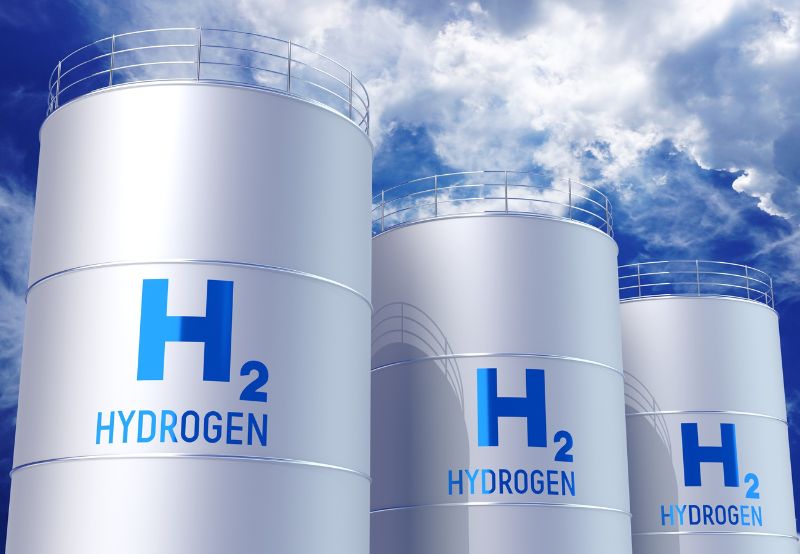MNRE Issues Guidelines for Green Hydrogen Use in Residential Sector
The revised program has a total budgetary outlay of ₹2 billion
August 8, 2025
Follow Mercom India on WhatsApp for exclusive updates on clean energy news and insights
The Ministry of New and Renewable Energy (MNRE) has issued revised program guidelines for the implementation of pilot projects using green hydrogen and its derivatives in the residential, commercial, and decentralized sectors that were previously not mentioned in earlier programs.
The revised guidelines focus on deploying green hydrogen in off-grid, localized, community-based applications. Decentralized production models using rooftop solar, small or micro hydropower, floating solar, biomass, and wastewater will be key features of the pilot projects.
These systems will also support uses such as cooking, heating, off-grid electricity generation, and off-road mobility, including construction and mining applications.
In the shipping sector, the program will support pilot projects that involve green hydrogen or its derivatives, such as green ammonia and methanol.
The projects will be implemented by the scheme implementing agencies (SIAs) that are designated for specific sectors under this initiative.
The program is part of the larger National Green Hydrogen Mission (NGHM).
Budget and Structure
The revised guidelines have a total budgetary outlay of ₹2 billion (~$23.26 million) until the end of the financial year 2026. This funding falls under Mode 2A of the NGHM, which pertains to pilot projects in sectors other than steel and transport.
The program is split into two main parts, each with an allocation of ₹1 billion (~$11.63 million). Part A supports biomass and other technology-based pilot projects, with a cap of ₹250 million (~$2.85 million)/project. Part B is intended for startups proposing innovative green hydrogen production or utilization technologies, with a cap of ₹50 million (~$581,395)/project.
Eligibility
Eligible applicants include central and state government entities, public sector undertakings, private sector companies, and ports and shipping firms. Consortiums involving multiple stakeholders, such as technology providers, port authorities, and project developers, are also allowed.
Preference will be given to projects with clear replication potential and substantial long-term impact. All pilot projects must have a minimum operational life of 10 years. The ownership of assets created under the program must not be transferred during this period without MNRE’s prior approval.
Implementation Methodology and Approval
SIAs will manage the selection and monitoring processes. Project selection will be carried out through a transparent request for selection mechanism. Proposals submitted will be assessed based on predefined technical and financial criteria, including innovation potential, feasibility, and alignment with India’s emissions commitments.
A project appraisal committee constituted by MNRE will evaluate and recommend projects for final approval. Upon selection, project proponents will sign implementation agreements with an SIA, detailing responsibilities, fund disbursement schedules, reporting requirements, and monitoring mechanisms.
All selected projects must be commissioned within 24 months from the agreement signing date. MNRE may allow extensions in justified cases, but failure to commission the projects within 30 months may result in cancellation of support and recovery of funds. Once operational, the projects are expected to run for at least 10 years and maintain detailed operational data throughout this period.
The data will be critical for assessing technical feasibility, learning from the pilot phase, and designing subsequent large-scale deployments. In the event of non-performance or deviation from agreed deliverables, financial support may be curtailed, and recovery of disbursed funds could be initiated.
Financial Support and Disbursement
Each project is eligible for financial assistance of up to ₹500 million (~$5.81 million), based on its requirements and evaluation results. The disbursement of funds will take place in three tranches, linked to project milestones.
The program outlines a three-stage financial disbursement mechanism. The first tranche of 20% of the Central Financial Assistance (CFA) will be released upon the letter of award issuance. The second tranche, comprising 70% of the CFA, will be disbursed based on milestone achievements. The last 10% will be released after successful project completion.
For private entities, CFA will cover up to 80% of equipment costs, while for government organizations, it will cover 100% of equipment costs. The CFA granted will be limited to the lower of the applicable ceilings under Part A and Part B.
Project proponents are required to contribute at least 10% of the total project cost as promoters’ equity. They must bear any escalation in project cost beyond the approved budget. In the event of delays or failure to meet predefined milestones, MNRE can reduce or cancel the sanctioned financial support.
Recently, MNRE issued the second call for Research and Development proposals under the National Green Hydrogen Mission.
